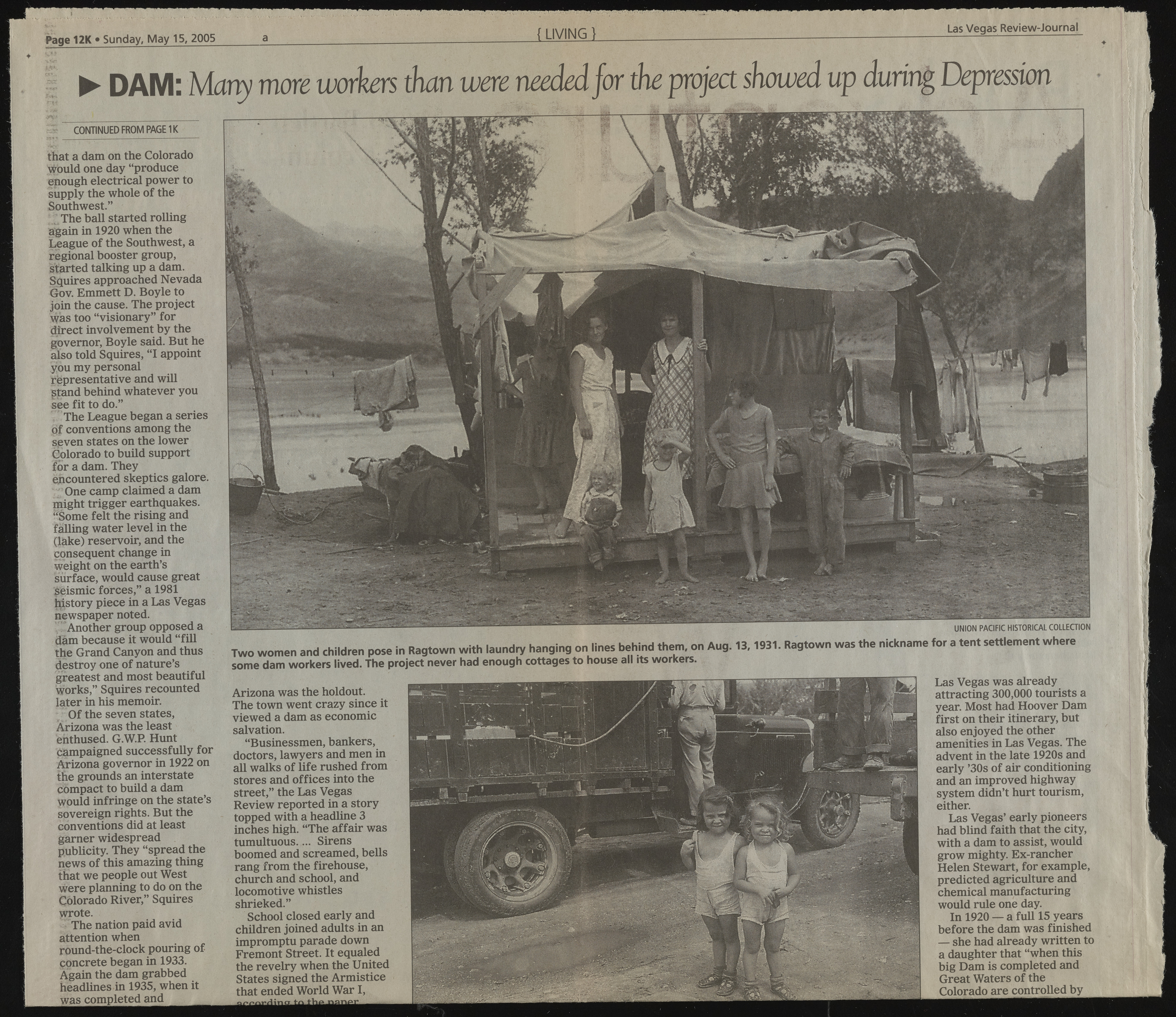Copyright & Fair-use Agreement
UNLV Special Collections provides copies of materials to facilitate private study, scholarship, or research. Material not in the public domain may be used according to fair use of copyrighted materials as defined by copyright law. Please cite us.
Please note that UNLV may not own the copyright to these materials and cannot provide permission to publish or distribute materials when UNLV is not the copyright holder. The user is solely responsible for determining the copyright status of materials and obtaining permission to use material from the copyright holder and for determining whether any permissions relating to any other rights are necessary for the intended use, and for obtaining all required permissions beyond that allowed by fair use.
Read more about our reproduction and use policy.
I agree.Information
Digital ID
Permalink
Details
Member of
More Info
Rights
Digital Provenance
Publisher
Transcription
n Page 12K • Sunday, May 15, 2005 [LIVINGT Las Vegas Review-Journal ? DAM: M any m ore workers than were needed fo r the project show ed up during Depression CONTINUED FROM PAGE 1K that a dam on the Colorado yfrould one day “produce enough electrical power to supply the whole of the Southwest.” The ball started rolling again in 1920 when the League of the Southwest, a regional booster group, started talking up a dam. Squires approached Nevada Gov. Emmett D. Boyle to join the cause. The project Was too “visionary” for direct involvem ent by the governor, Boyle said. But he ajiso told Squires, “I appoint you my personal representative and w ill gEand behind whatever you see fit to do.” 7 The League began a series §§ conventions among the sjeven states on the lower Colorado to build support lor a dam. They encountered skeptics galore. ^ One camp claim ed a dam p ig h t trigger earthquakes. “Some felt the rising and falling water level in the (lake) reservoir, and the consequent change in weight on the earth’s surface, would cause great $£ism ic forces,” a 1981 ||sto r y piece in a Las Vegas newspaper noted. Another group opposed a H im because it would “fill the Grand Canyon and thus destroy one of nature’s greatest and most beautiful works,” Squires recounted later in his memoir. Of the seven states, Arizona was the least enthused. G.W.P. Hunt campaigned successfully for Arizona governor in 1922 on the grounds an interstate BSmpact to build a dam Would infringe on the state’s sovereign rights. But the conventions did at least garner widespread publicity. They “spread the news of this amazing thing that we people out West were planning to do on the Colorado River,” Squires Wrote. 7rThe nation paid avid attention when rdund-the-clock pouring of concrete began in 1933. Again the dam grabbed headlines in 1935, when it was com pleted and T w o w om e n and children pose in Ragtown w ith laundry hanging on lines behind them , on Aug. some dam workers lived. Th e project never had enough cottages to house all its workers. Arizona was the holdout. The town went crazy since it view ed a dam as econom ic salvation. “Businessm en, bankers, doctors, lawyers and men in all walks of life rushed from stores and offices into the street,” the Las Vegas Review reported in a story topped with a headline 3 inches high. “The affair was tum ultuous.... Sirens boomed and scream ed, bells rang from the firehouse, church and school, and locom otive w histles shrieked.” School closed early and children joined adults in an impromptu parade down Fremont Street. It equaled the revelry when the United States signed the Arm istice that ended World War I, UNION PACIFIC HISTORICAL COLLECTION 13,1931. Ragtown was the nickname for a tent settlement w here Las Vegas was already attracting 300,000 tourists a year. Most had Hoover Dam first on their itinerary, but also enjoyed the other am enities in Las Vegas. The advent in the late 1920s and early ’30s of air conditioning and an improved highway system didn’t hurt tourism, either. Las Vegas’ early pioneers had blind faith that the city, with a dam to assist, would grow mighty. Ex-rancher Helen Stewart, for exam ple, predicted agriculture and chem ical manufacturing would rule one day. In 1920 — a full 15 years before the dam was finished — she had already written to a daughter that “when this big Dam is com pleted and Great Waters of the Colorado are controlled b;

